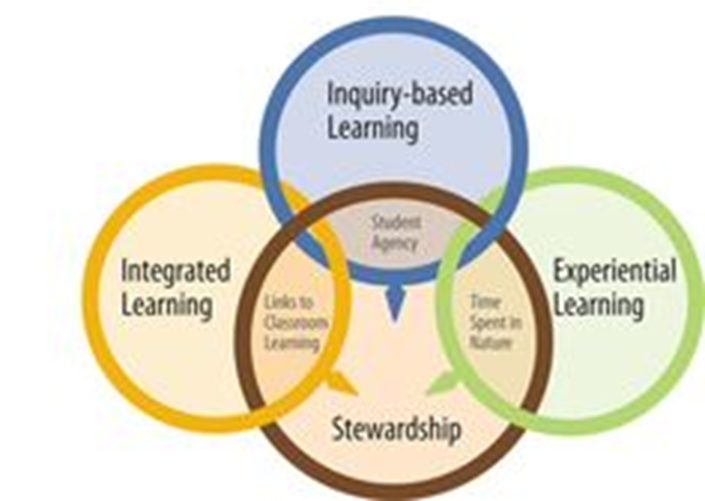August 9, 2024
Think and Reflect
July 2, 2024
CLASSROOM TEST FOR D.EL.ED 2ND YEAR
Dear Students
This is a test to understand how you prepare yourself after your class and how much time do you devote on your study at home.
This test is based on Unit -1 and Unit - 2. Moreover, 5 questions are based on Mathematical pedagogy.
Number of questions for each section will be different. There are 20 questions of 2 marks each. Every correct answer will give you +2 and every wrong answer will deduct your -1 mark.
Time allowed = 30 minutes
There are 3 numerical questions that may require pen and paper while the other questions are based on your mathematical understanding of the concept taught in the class -room.
May 22, 2024
April 29, 2024
Competency Based Learning - K Bhanumoorthy
Competency based teaching-learning:
A quote from
CLAY P. BEDFORD:
“You can
teach a student a lesson for a day; but if you can teach him to learn by
curiosity, he will continue the learning process as long as he lives.”
Introduction:
The competency-based teaching is a new approach (an innovative) in teaching- learning process. The word competency means skills, efficient, rather to enhance the abilities, working strategies. First and foremost, the phobia in the subject say mathematics is to be removed, create interest in the subject, the reasons why to study mathematics to be mentioned. Students are three kinds, some are visual, some auditory, some are kinesthetic.
Teaching methods to be cater to the needs of all kinds of students. Students progress is important, one has to work with vision and mission to see the students acquire skills to solve HOTS (High order thinking skills). The very important aspect how far the learning has taken place and to meet and answer the challenging questions. I would say at least, the minimum level of learning (MLL) should have taken place. In this aspect two people are involved, one teacher and the other the student.
Of course, the involvement and encouragement of parents are essential. The environment to say HOME, has to be congenial for proper learning. In brief parents have to trust their wards at the same time watch them, guide them then and there, if they are in wrong path. We human beings are blessed with sensory organs. Eyes, ears, nose, tongue, skin. One has to make good use of them. In the class room, eyes and ears are used.
One has to make best use of them. It’s a matter of pride and pleasure, how one sharpens his/her perception skills. I could make a suggestion. The competency-based teaching could be started right from middle classes (6 to higher secondary), so that there is gradual learning with more confidence and without any stress. It goes without saying teachers to be trained periodically to update their skills. (To adopt changes as and when required)
Benefits by
this approach:
1. Students acquire skills, be aware of
the knowledge acquired, where it is applied in our daily life, linkage with
other subjects especially with science.
2. To attain proficiency and grip over
the subject whatever study.
3. There is conceptual learning and no
rote learning.
4. There are many methods. Generally, a
class is heterogeneous, students are of different calibres. This method/approach
is based on students centred.
5. In the long run help students to
write competitive exams, Olympiads, entrance exams ----. Shall definitely help and
choose academic career of his/her choice.
Role of teachers:
1. To train the students where to apply,
what has been learnt, the knowledge.
2. Nowadays collaborative learning is
under practice, to be incorporated.
3. Students are to be encouraged to
participate in class room discussion and should not have fear to clarify doubts
with teacher.
4. To link the previous knowledge
acquired to the new topic whatever is being taught, there by fear complex is
removed/ vanished. There is horizontal as well as vertical integration of each
subject. (Students do move from one class to next higher class.)
5. To solve a question step by step, by
involvement of students.
6. Students are to be told what to
study, how to study and why to study. There may be more than a section in a
class, if necessary, the teachers have to change the approach depends on
students’ calibre, understanding abilities.
7. Students may be trained and be
encouraged to solve, under open-ended approach, so to say solving using
different methods using the given data.
8. To give names of reference books for
practice (as there will be some questions apart from the textbook). To refer
the syllabus prescribed.
9. To develop and make an impact,
creating curiosity, creativity, thinking aspects (abstract, analytical,
divergent, critical, logical----)
10. To evaluate the progress of students
periodically, students are to be guided and encouraged for setting their Goals
in academic career.
(Suggestion: Teachers have to keep some time for students’
interaction -to say 10 minutes for interaction out of 45 minutes class
duration)
To conclude, every individual is unique, hidden with lots of
talents. We are fully aware that teachers are nation builders. I am sure teachers’
fraternity shall dig out and bring the hidden talents to the surface.
Note: There are many subjects to study. I am confined to mathematics teaching
- learning aspects.
Learning is a treasure that will follow its owner everywhere---Chinese
proverb.
--------------- be continued with questions on various topics
of different classes.
April 26, 2024
Ramanujan Remembrance Day Quiz
Srinivasa Ramanujan (22 Dec 1887- 26 April 1920) , FRS was an Indian mathematician whose mammoth work in mathematics has created history.
The young generation should make him an ideal, who fought against all odd but never let his first love mathematics go from his mind.
He struggled to pass his FA twice, left his home, did odd job of tuition and finally got a job of clerk at Madras Port Trust before moving to England in 1914.
During his stay at England, he was of poor health but that didn't hinder his progress. He together with Hardy wrote 50 research paper and got an FRS degree.
His notebook containing 3400 theorems were proved by Bruce Berndt.
Ramanujan's birthday is celebrated as National Maths Day in India since 2011.
J B S Haldane once said -- If Ramanujan's work had been recognized in India as early as it was in England, he might not have emigrated and might have been alive today.
Here is a 250 marks quiz that shows you many picture related to Ramanujan and will help you to know Ramanujan in a better way.
Click here to play the Quiz
Don't forget to share with your friends
Yours
Dr Rajesh Kumar Thakur
Asst Prof
DIET Daryaganj
March 10, 2024
MATHEMATICIANS FROM INDIA
March 5, 2024
COMPETENCY BASED QUESTION MAKING WORKSHOP AT MANAVRACHNA UNIVERSITY
google.com, pub-5194588720185623, DIRECT, f08c47fec0942fa0
RAMANUJAN QUIZ DAY 4
Hello to All Hope you are enjoying the quiz. Today is the 4th day of the quiz and it will end on 22nd December. In the next coming days, yo...

-
19th National Maths Convention 2025 All India Ramanujan Maths Club in association with Science City, Ahmedabad is going...
-
ATR (Achievement Test Report) Definition 1. Any test that measures the attainm...
-
Dear All On the occasion of Pi Approximation Day being celebrated on 22nd July (22/7) every year, Here is one very interesting quiz dedicat...

































































































